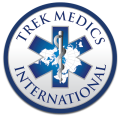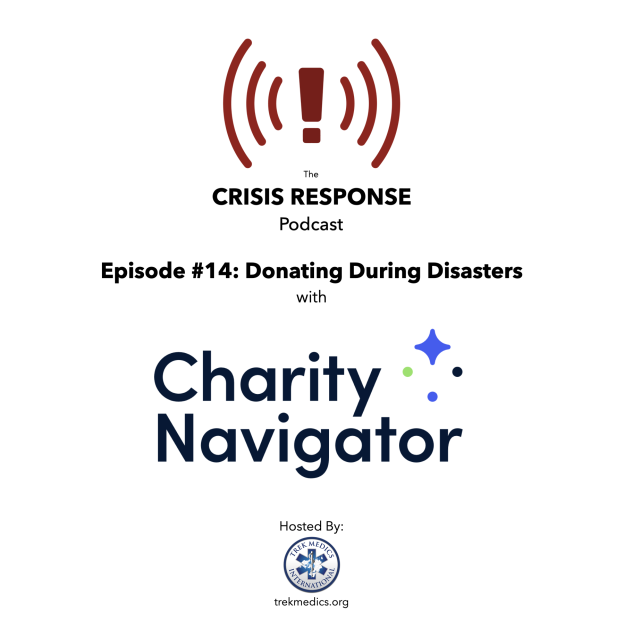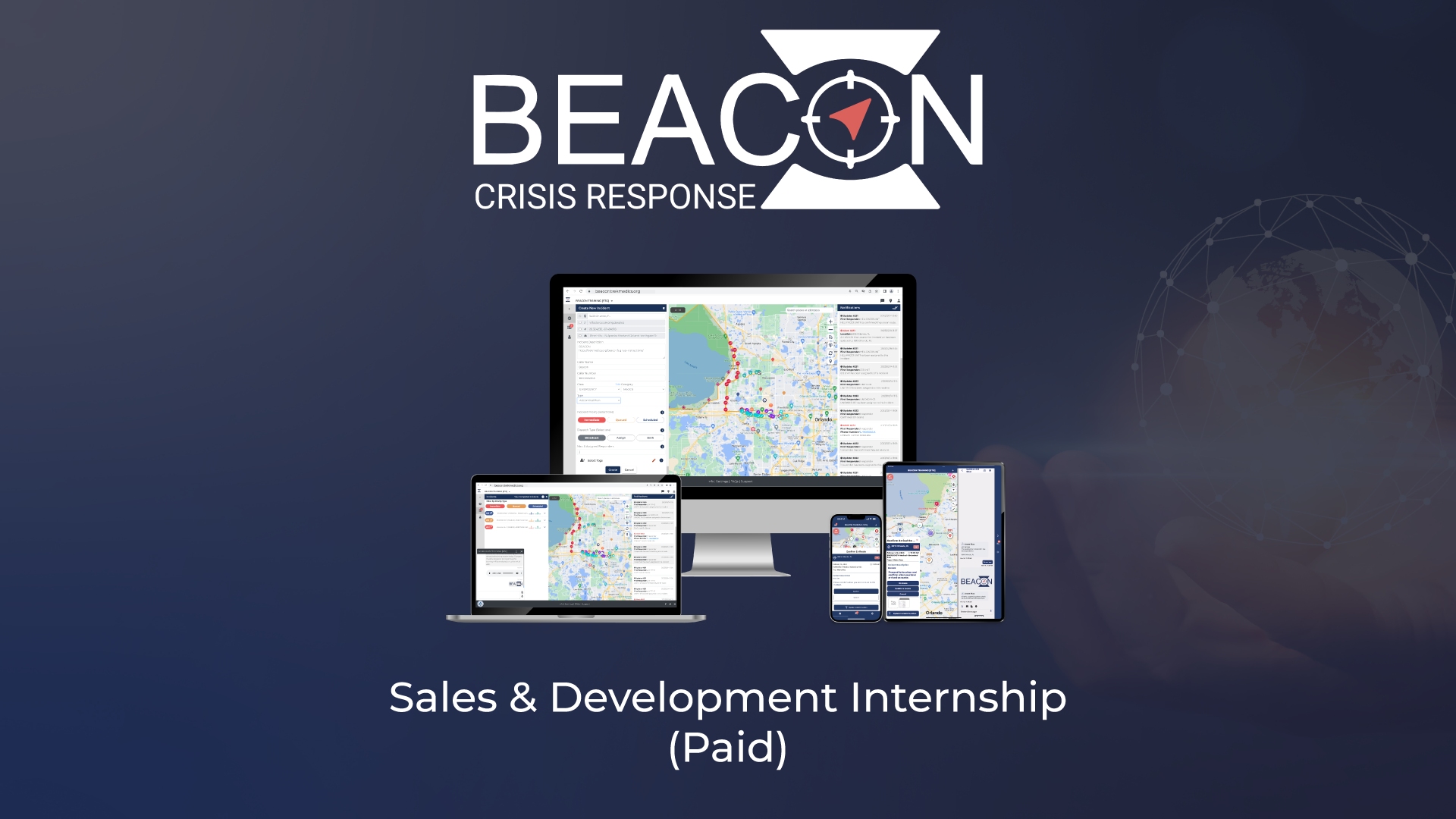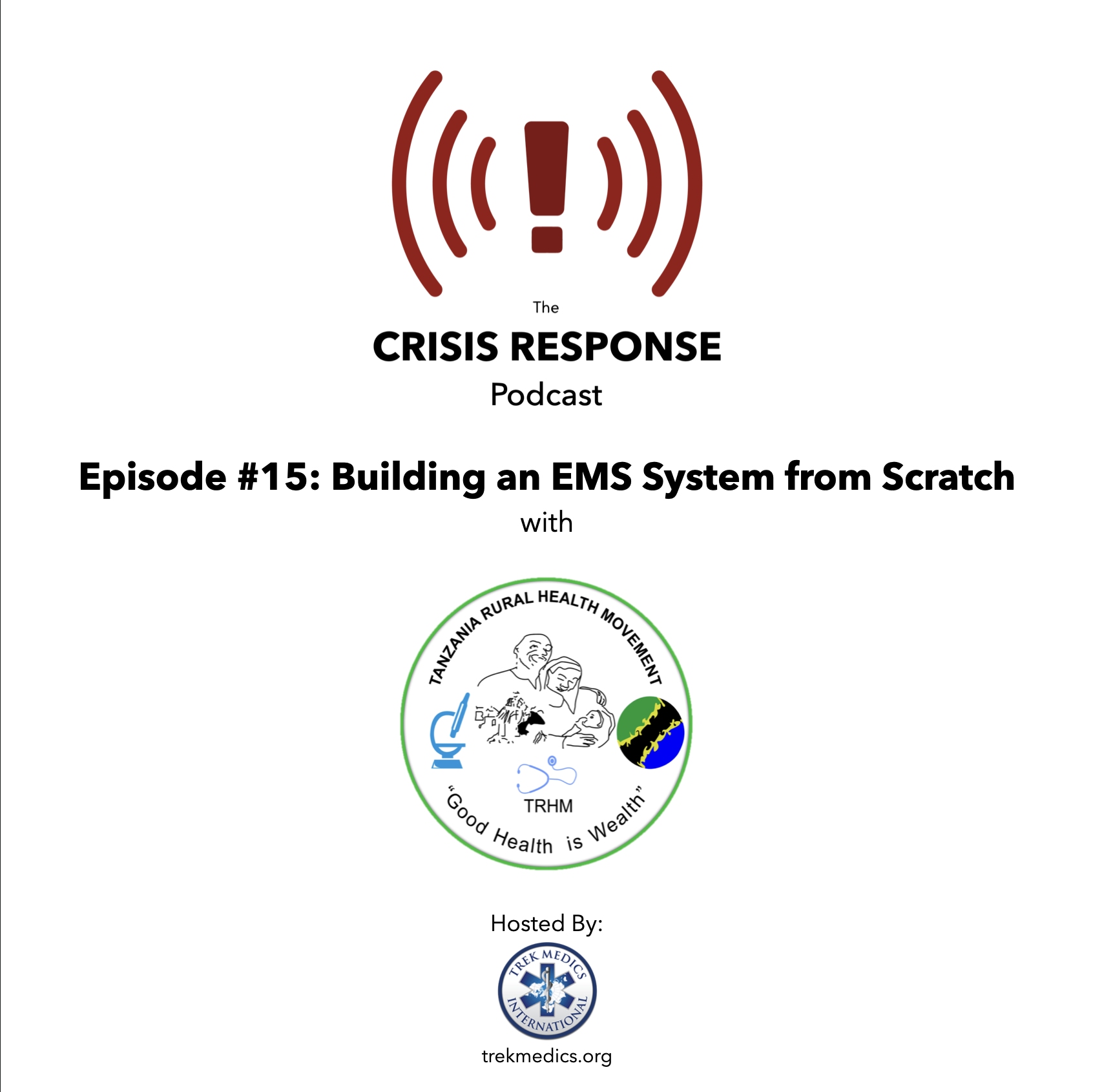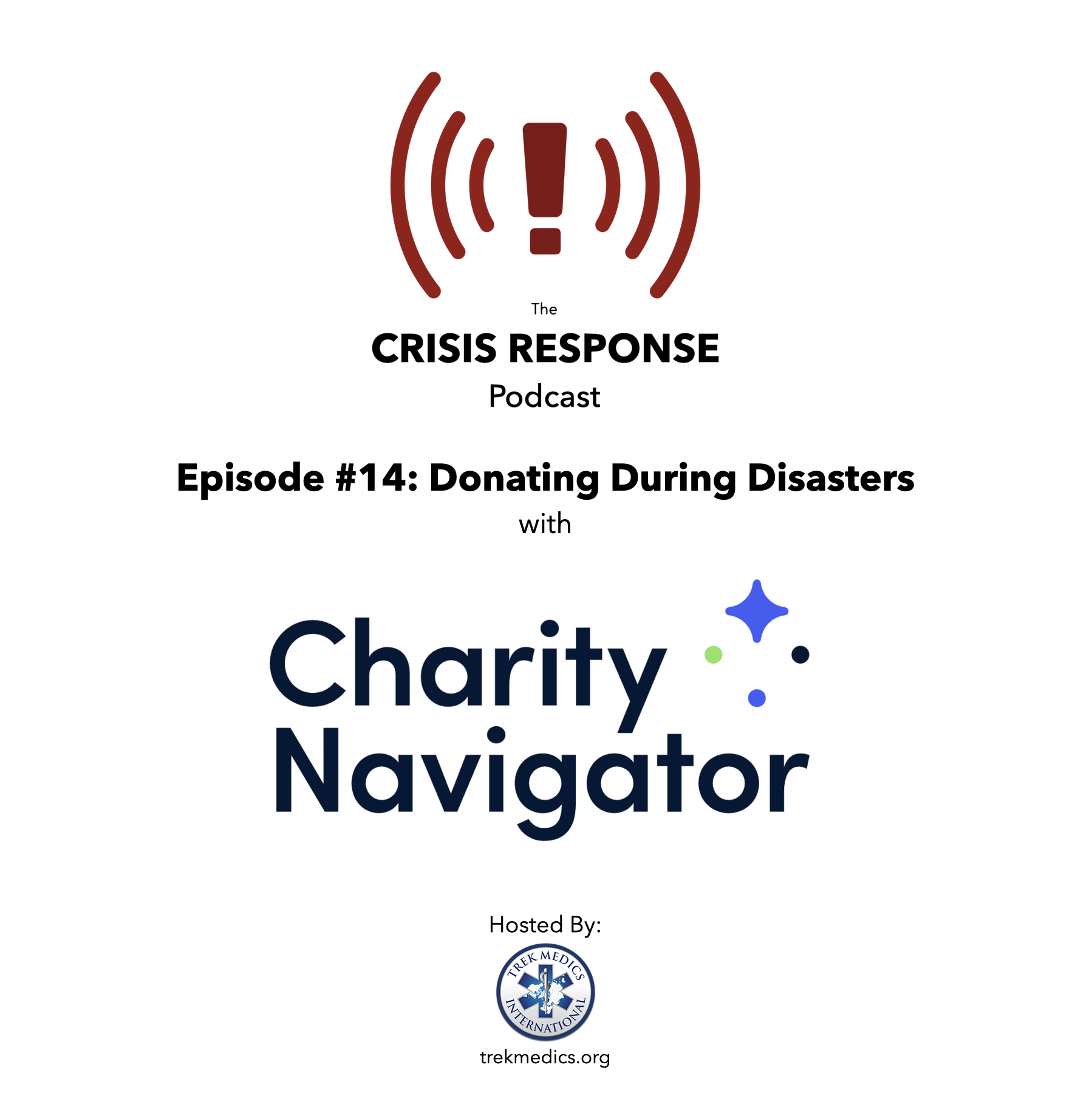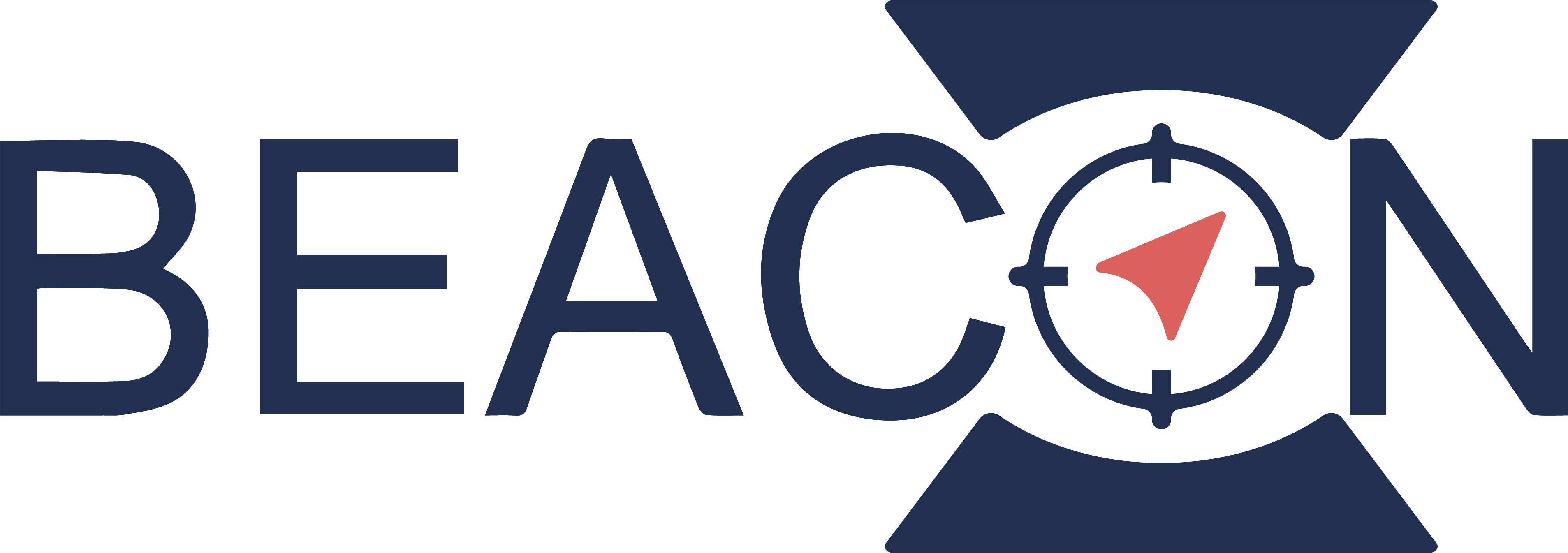Episode Transcript
This transcript was compiled using automated software — spelling and punctuation errors are possible.
Jason: Good afternoon and welcome to another episode of the Crisis Response Podcast. Today we are joined by the CEO of Charity Navigator, Michael Thatcher. Thank you so much, Michael, for joining us today.
Michael: Jason, I’m really happy to be here. Look forward to our conversation.
Jason: Absolutely, thank you so much. So if you could just start off by letting our listeners know about Charity Navigator and the role that you play in philanthropy, that’d be a great place to start.
Michael: All right. So Charity Navigator is the nation’s largest independent value of charities. We are a free service through our website, charitynavigator. org. We provide ratings and information on all legally registered U. S. charities. That’s a list of well over a million charities. And we have ratings on about 200, 000 of them.
So what we’re doing is basically looking at, you know, helping you find a good organization. We don’t charge the donor and we don’t charge the charity to get that rating. And then finally with regard to disaster response, when there’s an incident in the world, we very quickly put together a list of highly rated organizations that are actually doing something with regard to, treating that disaster or responding and helping the people that have been affected by it.
Jason: Very good. So maybe you could walk us through how that would work. For example, uh, Everybody’s aware of what just happened. The wildfires in Maui. So, so how did Charity Navigator mobilize, so to speak, for that disaster and facilitate the response?
Michael: Sure. And it’s a, it’s a great question. And that was, needless to say, a pretty, pretty devastating fire. what we’re doing on a regular basis across multiple news feeds, both sort of mainstream media, but then we also have feeds coming from different government agencies is we’re keeping, we’re keeping an eye on what’s going on in the world.
And I have dedicated staff members that when they see something, you know, a fire is something that happens very instantaneously. A hurricane, you get a little bit more advanced warning. And what our goal is, is to, as soon as we can, from the moment, um, the disaster hits, or it’s, we know it’s imminent, we’ll put together a list of organizations, so we have an intake form that we send out to a list of known entities that are actually addressing these types of issues.
They fill that out and then what they’re basically saying is, first of all, they have to be either a three or four star rated charity. So, you know, the highest tier of, of our evaluations, they have to have the ability to dedicate funds to the specific issue. So, for example, you’ll give to a large disaster organization.
You want to know that your money’s going to Maui. And so you want to be able to have that ability to say that in the, in the donation form. And then lastly, you want to know that they actually have feet on the street that are doing part of the cleanup. And so these lists, the initial list goes up, literally we’re trying to get lists up within an hour.
Uh, we’re not always able to do that, but we, we want to move really quickly. One of the reasons for that is mainstream media is also trying to help in guide donors to the best organizations in a time of disaster. And so if we have the lists ready, then the media can come and actually leverage that. Uh, for example, you know, Maui was an example where you also had the attorney general of the state of Hawaii that recommended to the public, you know, if you want to give to do something around the fire response, go to charitynavigator.org and look at their list. And so we were, you know, just to brag a little bit, we were the only organization that was on that list provided by the attorney general’s office. And so it’s, um, it helps you help those that need it.

Join the thousands of responders using Beacon worldwide.

Jason: That’s real validation. I mean, if the government’s saying that this is the, not official, but the authorized, the approved method of doing so, it sounds like a really good, point of validation. This is, I’ve been involved in disaster response for over 15 years now. And things have been changing drastically, particularly the way that people are giving money, you know, with the advent of things like GoFundMe or, uh, you know, just these kind of flash appeals, it’s so much easier to give.
How have you seen it change kind of on the higher level in terms of giving in the immediate aftermath, but then also long term giving, because obviously in the case of Maui, They’ve got a long road for recovery. So, so how has it changed for you? And what kind of trends are you seeing, uh, in, in the way people are giving?
Michael: A crowdfunding element to disaster response is, is both good and bad in the sense that it’s, needless to say, it’s, it’s, it’s been huge. And in the, in the event that you actually have some kind of knowledge of the individuals that are running these, uh, these, uh, campaigns, You know, you, then you know your money is going to the individual.
The challenge you have with, giving to an individual is that they, they have no restrictions on what they can do with that money. Now that could be fine and that could be perfectly aligned with your interests or it might not be. And I think the other challenge is, and this happens, sadly, this happens a lot.
At times of crisis and disaster, you have a lot of pop up fraudulent organization. And so what, what that means is that you may have an organization that’s, you know, the name sounds really similar to an organization that’s sort of a household name. And if you’re moving quickly and just trying to execute on a donation, you can get yourself into a, you won’t even know you’ve given to a fraudulent charity.
I think that’s the hard part. You may still feel good about yourself, but your money is going to someone’s vacation home in the Bahamas. And that’s, if you did know that you probably wouldn’t feel so good about it. So our, our approach is to say, slow it down a little bit. You already know when you see the disaster, like I want to do something about this, take that emotional hit and kind of say, Oh, wow.
All right. What do I want to do in Maui? Is it help individuals? Is it rebuild businesses? Is it, somehow support the first responders? Try and get specific, and I think that’s where our platform’s set up to help you get specific in your search. But the other thing that I think is really important is, in the case of disaster, Maui’s almost an easier example.
Let’s go overseas now. Let’s think about the floods in Syria. That was huge, right? Syria is a country that the U. S. has sanctions on. How are you going to help giving to the Syrian people in that particular, um, situation? And so what, you know, the way you want to do that and the way, the way this, you know, we found that this works is a lot of the large, um, established organizations in the area of disaster response.
And we’re talking, you know, really big organizations. They have, uh, subsidiaries that are able to work with the complexity of, one, difficult, intergovernment, uh, relationships, the ability to engage in territories that may or may not be safe. And so that’s where I think you’re actually better off giving to an established entity that has a known track record of actually doing good in, in situations like this.
And so I would say, I would caution on, Um, in the, in the case of a complex disaster, find an organization that already knows how to deal with that complexity. Otherwise you may also be sending money to a well meaning organization, but may, they may have more difficulty in actually executing.
Jason: So we see, uh, that often, I’m sure you see it even more than we do, because we’re not tracking it like you are, but, um, they’re especially in the aftermath of major catastrophic disasters. For example, Uh, the 2010 earthquake in Haiti or, uh, you know what you were just talking about, there’s been flooding and earthquakes in Syria, Libya, and, you know,
Michael: Libya, Libya. Yeah.
Jason: massive catastrophic disasters and people just out of the generosity of their hearts and, you know, wanting to help really start donating a lot of money and a lot of organizations oftentimes.
find themselves where they have more money than they were ever expecting. And so how, how can you, do they ever post how much money they’re raising? Or is there some kind of metric to say, you know, we only want to raise a million dollars and at a million dollars, we’re going to stop raising money because beyond that is just going to be more than we can handle.
Can you talk about that at all?
Michael: So the, the only time I’ve seen that happen, um, and then that was in the aftermath of the, the killing of George Floyd. And you had organizations in, um. You know, on location that suddenly received such an influx of money that they started to regrant back out because they actually couldn’t handle the inflows of what they were receiving.
They wanted the money to do good, but it was more than they could actually handle. I think, and again, this goes back to sort of larger organizations that have dedicated funds to a specific issue. They’re going to hold on to those funds and they’re going to use them over time to actually deliver. One of the, um, you know, the, you, you already said this, uh, Jason, in the sense that, you know, when something like one of these events happens, it’s not, it doesn’t follow the news cycle.
It lasts for years. So the cleanup from Haiti is still going on, right? There’s still, and there, sadly, there have been other storms and then other, other earthquakes. And so some of these things are additive of, um, uh, And so organizations that are in these countries for the long haul, they’re going to hold on to those funds and they’re going to use them over time.
I would say as a donor, as a prospective donor, if you care about an organ, you know, care about a situation and you want to be in it for the long haul, one thing you can do is consider giving a recurring gift. The way you do this is by signing up with the credit card for a monthly amount to be debited from your credit card.
And what that does is it allows the charity to actually, they have some assurance that on a monthly basis, X number of dollars are gonna hit their account and that those dollars are actually earmarked for the specific issue at hand. This is super helpful because, When the event happens, within that first week, there’ll be a huge, um, uh, focus on donations.
And then within a week, it really tapers off. And so having the recurring gifts that they can count on gives them s s s sustainability, um, in order to actually keep going in their response. So
Jason: what are the indicators that you are looking at? You’ve already mentioned a couple one familiarity, but also, you know, they have the infrastructure. But let’s say that there are a lot of these smaller groups, right? We work with a bunch of disaster response groups that are not household names, but because they’re more nimble, right?
They’re smaller. They’re able to move a little bit faster. And, you know, when you’re talking about these major national international NGOs, they’re very effective. They’ve got these established relationships, but they also have bureaucracy, right? And they can kind of get slowed down by that, like any giant organization.
But let’s say you wanted to work with a smaller organization. how, how would you, what are the kind of things that you’re looking for? In terms of making sure that this is a legitimate, uh, you know, charity or, or organization to donate to.
Michael: the things we look at, and this, I’ll just speak to this with regard to the actual charity navigator rating. And the way the ratings are set up right now is we’re looking at four key areas, uh, or performance indicators, um, around overall organizational health and then the ability to articulate, uh, results and then the costs, uh, to achieve those results.
Ultimately, as a donor, um, you want to know that the organization is achieving its mission, right? And then the other question I’d ask yourself as a donor is, am I aligned with that mission? That’s important. There are, you know, as I said, there are over a million charities out there. You’re not going to align with the mission of every single one.
And so the same is true as I, you know, be specific, make it personal. The way we, we look at this, you know, the, um, the four areas, we talk about leadership and adaptability. So, clarity of mission, strategies to achieve that mission. You should look for alignment between the two. adaptability is important.
Disasters are, require high levels of adaptability. Our world today requires high levels of adaptability. When you look at what, you know, organizations had to go through during, during the global pandemic in order to really just keep executing against their, their mission and delivering on program. The other thing we look at, and I think is important for donors to consider, is what we call culture and community.
Two parts to this. One is how well does the organization, uh, listen to those that they serve? So something that we often speak of it as beneficiary voice or constituent feedback But when you’re when you’re actually providing a service Are you actually doing that in in alignment with the needs and desires of the people that are being served?
So it’s figuring out how to close that loop because if you think about it You’re paying for a service that you will never receive. You, you are not the recipient. So if that service isn’t very good, the only way for the, the, the working charity to know that is by actually polling and engaging with the people they’re serving to see if they’re actually meeting their need.
Super important. Also really important in disaster response because sometimes we think we know it’s right, but if we don’t ask people we’re gonna miss. in culture and community the other element that’s looked at is internal equity practices so Really wanting to, you know, there’s great data showing that strong equity practices lead to better outcomes, a higher performing team, better overall morale and ability to engage on issues.

Join the thousands of responders using Beacon worldwide.

Less culture and community. Next up is more just a pure financial and government governance analysis. Want to know that the organization has significant resources or enough resources to keep going, some reserves. They’re, they’re, you know, they’re balancing their books. They’re not massively in debt and suddenly going to go out of business in a, you know, in a couple of months.
So that’s just, you know, pure finances and good governance. Key area of governance that I think folks should be looking for. Is, does the organization have an independent board of directors? You want that independence because that way, if things start going a little bit off, the board can step in and actually realign the organization.
This is, you know,
Jason: I could just interject real quick, sorry.
Michael: yeah,
Jason: What do you mean by independent? What does “independent” actually mean?
Michael: So independent means that, um, in general, what that means, it’s kind of two things. One is that you have a… We like to see at least five board members. Uh, you can get, uh, you can get a score with three. So one is you want an odd number so that you can break a, break a tie in a vote.
And those should not be compensated, uh, entities. So there, there’s, there’s no sort of vested interest in specific outcomes of the organization. So take an organization like Charity Navigator. We’re, we are also a 501c3 charity. We have a board of 15, uh, independent board members. I am an ex officio member of the board.
Basically I get to sit on the board. I don’t get to vote because I’m paid, I’m paid staff, right? But the rest of the board, they don’t receive any money for being on the board. In fact, they actually make donations to support. And that’s, that’s sort of one of the things in the nonprofit sector is board members generally are supporting the organizations, both with.
Time, treasure and talent, right? And that’s, that’s, that’s what we’re looking for. the last thing in, in the ratings that is absolutely critical is our, you know, impact and results. And that’s, you know, is the organization actually doing what it’s saying it’s doing? And then the way we’re looking at that today is, are they doing so in a cost effective manner?
So we’ve come up with ways of doing a cost per outcome analysis within specific program service areas. And that helps ascertain whether or not, um, Your dollars are going to that, you know, to achieve that which you seek to, um, to get done.
Jason: Thank you. That’s all very helpful and makes a lot of sense. This last one is, it’s interesting to me because that must be pretty complicated to come out up with those different ways to assess because all sorts of charities are doing very different things. 1, but 2, sometimes a lot of what they’re aiming for is very, you know, we want world peace, right?
And and so how do you assess if an organization is achieving world peace? So I’m wondering if you could share a little bit more about how. Thank you. How does your organization actually assess impact?
Michael: So the, it’s, so world peace is a tough one, alright, and I don’t know that we’re rating that right now, and I would, I would, uh, hate to make that claim, but, um, though I
Jason: not doing very well.
Michael: but I would love to see it happen, right? the way, the way we’ve set up our, our cost for outcome analysis is taking, um, taking known interventions.
They’re generally for the most part, our interventions are in what we would consider human services or direct services, um, related areas. Something like cataract surgery for preventing blindness. You know that that’s a, that’s an intervention that works for, for reducing blindness. There’s a terrific amount of academic literature on it that actually shows, shows the effects of it that allows you to create some working averages of what the costs are.
You then, you factor out something that’s called a counterfactual, which is basically saying, if this intervention hadn’t happened. How many people would still go blind versus those who don’t go blind if you did have the, um, the intervention. And then with that, you then look at the cost per outcome of each individual organization.
You’re only comparing You know, like, like entities to like entities. So it’s got to be just in that program service area, you know, again, stay with, um, cataract surgeries or blindness prevention. And then you do comparative analysis between them to come up with a score that says the average cost per outcome is X number of dollars.
And um, and then you are, you’re able to differentiate between the different organizations on their cost structures. So it’s, um. We’re in, this is a work in progress for us right now. Each program service area will spend a couple of months working on an algorithm and then we’ll apply that algorithm around the same set of organizations that are doing that.
So, another area would be something, you know, let’s say out of the area of, um, disasters but more with animals, something like spay neutering of, um, of animals to reduce the number of stray animals that are, you know, on, on the streets right now. There’s, we, we’re picking areas right now where we have the highest number of charities, so something like the, you know, the, the different animal shelters are, that’s a great example where we’ve done, we’ve done that analysis.
It’s gonna take us a while to get full coverage. It’s also going to be. Uh, we’re going to be limited in that I don’t think something like world peace, or policy change, right? Policy change and any kind of advocacy work, super hard to come up with, um, sort of reliable cost per outcome analysis. And so we’re going to have to figure out something else for that.
We’re not, we’re not currently there yet.
Jason: So it sounds like you probably have a lot of data scientists on staff.
Michael: But data analysts. So in other words, we’re and we’re at some some data science. Actually, the more data we produce, the more with, you know, the capabilities for data science are coming on. And so it’s pretty exciting right now because we’re because we’re having to dig into areas and work with the real experts in the specific segment areas because we’re going to.
We’re expert generalists, but we want to be really careful that we’re not, you know, we’re not applying a single ruler across all entities. You’ve got to be specific. It’s very important.
Jason: So there are a lot of organizations, and full disclosure, us included, that are not ranked on Charity Navigator. And I’m wondering, uh, you know, and it says on the website, just because an organization isn’t ranked on charity navigator doesn’t mean that that’s good or bad. And I’m wondering if somebody goes and they see a small disaster response organization that’s not listed on charity navigator.
What would you say in terms of other ways that they can assess if it’s just not, you know, the large NGOs are going to be on there? And and I can also say for us, we. We don’t do program delivery. We don’t deliver services and another criteria, you know, that’s on charity navigators, we’re not dependent — I think less than 5 percent of our contributions are from individual donors. So, that’s another criteria that you use.
I’m wondering if you could, you know, somebody wants to donate to a mud, you know, landslides in Washington state after torrential downpours. And there are very small community groups that are doing work.
You see them on the internet, you see them on TV there with their uniforms or their t shirts, but they’re not listed on charity navigator. that a good thing or a bad thing? Or does that, are there other ways to go about this?
Michael: I think, you know, we’re, we’re fairly consistent in our, in our messaging on this. The fact that an organization’s not rated doesn’t in any way reflect on their capabilities. It’s, it’s, um, It’s unfortunate, I mean, we would love to have full coverage. Some of these smaller organizations are, are often working through what’s called a fiscal sponsor.
So, they have someone else that has the legal status as a 501c3 non profit, and they’re allowing these entities to, to a certain extent, slip under their wing. And so, they fundraise on behalf of the, um, of let’s say the, the small mud, mud, mud disaster recovery organization. That doesn’t make them a bad organization.
It just means they’ve choose, they’ve chosen not to take on the, the overhead of actually becoming a 501c3 and they’re working with the fiscal sponsor. That can often be a temporary phase where, you know, in a year or so they will actually move from being fiscally sponsored to incorporating as a 501c3.
And then, uh, the way our ratings work right now is that we need three years worth of e filed tax data before we can issue a rating. So younger organizations that are a year old, two years old, even three years old until we actually get that third, tax form. We can’t, we can’t issue a rating. So that’s, that’s some of the limitations we have on, on our ratings capabilities.
What I would do as a donor, if you see an organization, you’re interested in them, they look small, use, go to, go to our ratings, right? And use that as a almost like a talking, like a talk track to ask a series of questions of the organization. So, I mentioned the four areas that we’re looking at. I would literally just like look at what we measure and then get on the phone or go in and meet, meet with folks at, at one of these smaller organizations and see how they tell you a story about their leadership.
Understand how they engage with their, the people that they’re serving more from a culture and community perspective. Ask them about their governance structure. Ask them about their finances. You know, are they, are they solvent? And then it’s always interesting to have them articulate the difference they’re making in the world.
Because any non profit leader ought to be able to tell you the difference they’re making in the world through their program intervention. So it’s, yes, it’s nice to have the automated tool set. We’re trying to provide as broad coverage as we can. But we’re also giving you a framework to ask some really just sort of pointed questions that will then let you make a really educated choice on your own.
And so that, that’s how, that’s what I would do. and, you know, with my apology to you that saying, I’m sorry we don’t have, you know, total coverage because we’re, you know, it’s, it was the thing that kept me awake at night when I first joined Charity Navigator about eight years ago was, you know, back then we were rating 8, 000 organizations, we’re now rating over 200, 000, over 209, 000.
And I would run into folks and they’d say to me, you know, I only give to Charity Navigator rated charities. And I’d be like, No, you know, in other words, we’re not covering, we’re not covering enough for the marketplace. You’ve got to, you’ve got to, you’ve got to do a little more work on your own. And so we’re, we’re, all we do is try and make it easier to be impactful with your giving, but we are limited.
You know, we’re a small organization that’s, you know, also working as a charity and we do not have, um, endless resources to provide coverage. So we’re, we’re trying to give you the best tools we can and then the rest is up to you.
Jason: Fantastic answer. It makes a lot of sense that, you know, to use your criteria is kind of a road map to do your own assessment. If if, uh, organization isn’t listed. so 1 thing that’s come up, you’re well aware of is there’s been a lot of focus. In evaluating, uh, organizations. on how they use money, right?
And understandably, so, there’s been a lot of talk about direct versus indirect expenses. Right? Is the if I give a dollar to an organization, how much of that is actually going to use for the program implementation or the service delivery versus are they using that money to go and pay for salaries?
Or are they using that money to go pay for more fundraising? And I don’t hear it so much anymore. Maybe I’m not following it too much, but for a while, there’s a big talk about you’ve got to be 80 percent or higher. On on direct expenses. And anybody who’s spending over 20 percent on indirect expenses, just ballpark number, is maybe not using your funds so efficiently.
Could you talk a little bit more about that and the nuances of that or, or what your, your feeling is about indirect versus direct expenses?
Michael: Sure. And I think, you know, needless to say, there’s been. A lot of good research. Uh, there’s a lot of legacy behavior around wanting to only fund program expense and not fund anything overhead related. And so, and you know, and know that charity navigator, you know, we’ve been around 22 years or a big chunk of that time.
The overhead ratio was a core part of the rating. Now, that’s no longer the case. And so the, the, we’ve completely modulated our, our ratings approach started in 2020 where we, we launched a parallel system, something we were calling the encompass rating system, which is really these four, you know, sort of four.
areas that I spoke about that, um, are looking at overall organizational health and really try to articulate the impact of the organization. The other thing that we did with, the overhead, component of the rating, was we removed the weighting that it had, and we also made it a threshold metric versus an additive metric.
So originally, if you got to 99. 9 percent program expense, that was the best, that was the best score you could get. So it was essentially driving folks to reduce their overheads at all costs. The problem with this is, is twofold. One is, it really tells you nothing about impact, right? It doesn’t tell you the difference the organization’s making in the world.
It just tells you where they spent your money. Now, that may be important to folks, but if you care about the impact you’re making and you’re trying to, you’re trying to affect a social issue, you should care more about, um, the articulation of the difference that’s been made with your dollars. So, not where, not so much where’s my money going, but what did my money, what did my money do?
And so that’s, that’s one area. The other problem with, putting all your money into programming is you’re basically starving the organization. You’re not paying for human resources. You’re not developing your people. You’re not, probably not spending enough on fundraising because you do, you do need to fundraise in order to execute on your programs.
And so I think that’s an area where You have, just quite simply put, the non profit sector is a 460 billion sector. It’s 10 percent of the U. S. workforce. These are women and men that are strong professionals, deserve the right to earn a living, and also put their kids through college just like everybody else.
Now the, if you, if you squeeze too tight and you reduce salaries, then what ends up happening is that you have a tremendous amount of employee turnover because you’ll have a lot of young motivated staff join the organizations. They reach a point where they start having families and they realize they can’t sustain their family and stay in the non profit sector.
That hurts everybody. It’s actually, it really hurts our society because the non profit sector is such a safety net to keeping us going in areas where there’s either no business model that’s going to bring in the for profit or the, or government’s not actually able to do that, do that kind of work. So we’re strong proponents for, you know, pay what it takes, overhead.
You want to manage it. You want to keep you, you, we want organizations to be efficient, but we want organizations to be healthy. And even if you look in the leadership and adaptability metric, we want to know you’re investing in your leaders. Because if you don’t train your leaders and if you don’t develop them, you’re not going to go far.
And so it’s, there’s been a huge shift. The challenge is we’re trying to change human behavior in something that people have been believing in for a really long time. We have the data. The, everybody’s seeing that, you know, overhead is not the thing to be tracking. But there’s a, there’s a long tail on this in terms of getting understanding and then getting crisp on articulating organizational impact.
Join the thousands of responders using Beacon worldwide.
Jason: Very thoughtful answers. I really appreciate that. And, uh, especially, you know, these organizations that are large and complex or providing much needed skills. you need experienced professionals to really execute and to grow the impact and, uh, you can’t do that with. With, uh, with small salaries.
Yeah, thank you very much. That’s that’s really great to hear. One last question I have is, you know, you had mentioned you’ve been now with charity, uh, navigator for eight years and I’m wondering if you could just share where you’ve seen things change over the past eight years, where they’re going and where you would like to see them go are.
Do you think we’re headed in the right direction or do you think that we need some course correction here and and particularly as it pertains to to disaster response and and and donors giving in a really acute sudden onset situations.
Michael: So I think, you know, in the eight years I’ve been with the organization there, there are a couple of trends and there are some of them are, I’ll start sort of at a larger macro level and then bring it down into the area of disasters. Um, at a macro level, what’s happened, um, nationally, at least in the U. S.
is, That there’s been, uh, there’s, um, we continue to have more and more charities that are incorporating. So the number, you know, was, goes from 1. 4 to 6 million, uh, regist U. S. registered nonprofits. So there’s a, there’s a growth in the number of charities that are available to support. And then counter to that growth is there’s um, there’s a progressive decline in the number of U.
S. households that are actually giving. And for the first time in the history of the nation, in 2018 we dropped below 50 percent. So 20 years ago there was about 60, 70 percent of the U. S. population gave to charity. Now it’s in the, it’s in the high 40s. And that’s, that’s alarming, right, because what it’s telling you is that there’s, and, and then the third, metric that you get this either from the Edelman Trust Barometer, or you can also see this, the Lilly Family School of Philanthropy just issued a report a month or two ago on trust in the nonprofit sector.
It’s declining. So, trust in general in institutions has declined, that’s, you see that in the Edelman Trust Barometer. Charities are still at the top, at about 38%, but 38%, um, of the population thinking you’re trustworthy, that’s not a great number, right? so we’ve got a decline in trust, we’ve got an increase in the number of organizations out there, and a decline in the number of households that are giving.
that’s just not a good, that’s not a good set of, um, uh, trends that, um, and what it’s going to require of the non profit sector is that we, either we find ways of increasing trust with our donor population so that we, we turn things around and people start. People start giving again to, it’s also going to force collaboration and consolidation, right?
Because if there’s less money and too many people doing the same things, they’re going to have to learn how to work together. We’re going to have to learn how to collaborate. And that is something that I have seen change within the sector. When I first joined, I was amazed at how little, a little good collaboration actually took place.
Um, and even in the sense of like merging and acquisitions and things like that. And that’s, that’s changing. You’re having a lot of organizations that are finding ways to work together in a, in a much more effect, effective way and get more done. So that’s, that’s kind of at the, at the very broad level. I think in terms of disasters, the frequency and the types of disasters just seems to be growing, right?
Particularly with climate related disasters, I mean, just look at the last month, it’s, it’s been more or less two months. I mean, it’s, we’ve had hurricanes, we’ve had floods, we’ve had earthquakes, we’ve had fires. Very condensed, the positive, that we’re seeing is that people are still giving. So there isn’t donor fatigue at this point.
Every time there’s a disaster, we are seeing an outpouring of, um, of generosity. And so that’s super heartening that people still care. But I also think that that is, you know, the fact that this is, there’s more and more happening is, um, It’s troubling, right? Our world is becoming, uh, more challenged right now.
So I think those are, those are the kind of the, the top level, trends that I’m seeing that, um, not all are good. Um, but, um, and then I, and we talked about this a little bit. The other thing is that there’s a greater, there’s a greater variety in the ways that one can support, uh, disasters and also social change from the, uh, crowdfunding.
To, uh, be corporations and corporate corporations taking on a much more philanthropic stance, even though they’re not reincorporating as, uh, 501c3 nonprofits. And so there’s a bit of a, there’s a graying of the lines between for profit and nonprofit right now that I do think is beneficial. It’s just sometimes it’s harder to define the space because it’s hybridizing.
Jason: Makes a lot of sense. I, I think the, the decline in trust is something that, like, you said, is happening across all institutions, but it’s particularly concerning for nonprofits, because if they don’t trust the nonprofits. know, I’ll, I’ll leave that sentence right there. So, uh, but thank you so much, Michael. It’s really been a pleasure, uh, doing great work. And I think it’s such a valuable tool for, for, particularly organizations looking or individuals looking to donate to American 501 C3 organizations. Thank you so much for your time and really appreciate it and look forward to staying in touch.
Michael: Thank you, Jason. I really enjoyed this.
Jason: Thank you.
